
Deutsch-Chinesische Enzyklopädie, 德汉百科
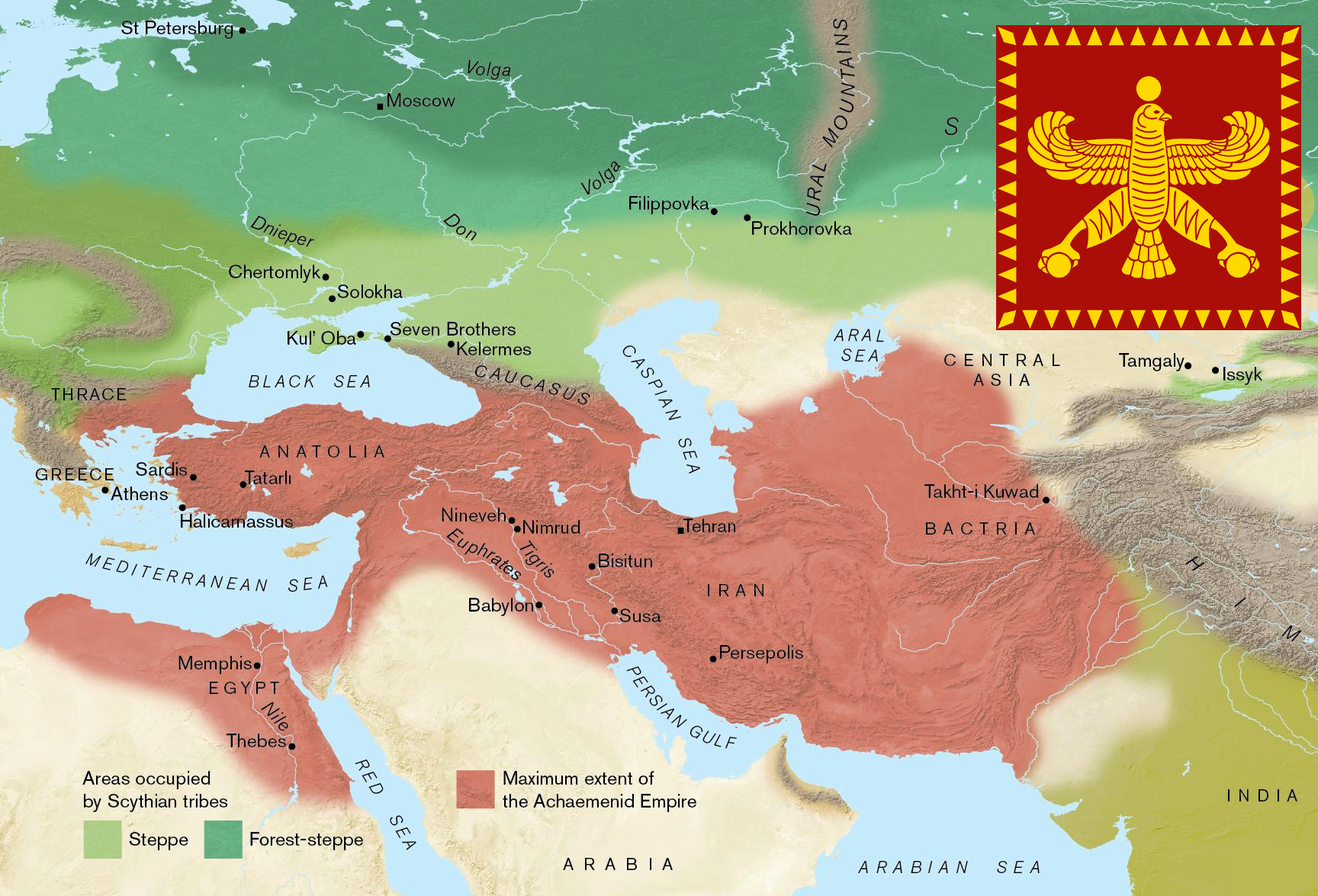
Das Achämenidenreich (auch als Altpersisches Reich bezeichnet) war das erste persische Großreich. Es erstreckte sich vom späten 6. Jahrhundert v. Chr. bis ins späte 4. Jahrhundert v. Chr. über die Gebiete der heutigen Staaten Türkei, Zypern, Iran, Irak, Afghanistan, Usbekistan, Tadschikistan, Turkmenistan, Syrien, Libanon, Israel, Palästina und Ägypten. Das durch Herodot und andere altgriechische Historiker der Geschichtswissenschaft bekannt gemachte Achämenidenreich expandierte erstmals 550 v. Chr. unter Kyros II. durch die Annexion des Mederreiches. Unter den Nachfolgern erfolgte die Fortsetzung bis zur späteren größten Ausdehnung, die ihren Höhepunkt um 500 v. Chr. erreichte und zu dieser Zeit auch Teile der Staaten Libyen, Griechenland, Bulgarien, Pakistan sowie Gebiete im Kaukasus, Sudan und Zentralasien umfasste. Im Jahr 330 v. Chr. beendete Alexander der Große die Herrschaft der Achämeniden.
Der Name des Reiches leitet sich von der altpersischen Dynastie der Achämeniden ab. Diese die legendären früheren Herrscher (wie sie etwa im Schahname geschildert werden) ablösende Dynastie ist nach dem Stammvater Achaimenes benannt, der die Perser von einem Siedlungsbereich in der Gegend um den Urmia-See in das später nach ihnen benannte Land Persis (heute Fars) geführt haben soll. Der Name Achaimenes ist die griechische Form des Namens Hachamanisch.
Das Achämenidenreich tritt in der westlichen Geschichtsbetrachtung vor allem als Gegenspieler der Griechen auf. Als Eckdaten gelten 490 bzw. 480 v. Chr. (Schlachten bei Marathon und Salamis) und die Jahre 334 bis 330 v. Chr. (Eroberungszug durch Alexander den Großen). Von dieser Perspektive aus wurde die herausragende Rolle des Reiches im Hinblick auf die Geschichte des Vorderen Orients, und, wie sich in der neueren Forschung herausstellt, auch auf die Entwicklung des antiken Griechenlands, weitgehend verkannt. In der Bibel ist das Bild der Perser positiv; hier erscheinen sie als Befreier der Juden und Förderer ihrer religiösen und kulturellen Bedürfnisse. Die historische Rolle, die dem Achämenidenreich in den 220 Jahren seiner Geschichte zukommt, ist jedoch viel bedeutender. So wurde zum ersten Mal in der Geschichte der gesamte Vordere Orient unter einer Herrschaft vereint. Kulturelle, wissenschaftliche und wirtschaftliche Errungenschaften prägten das Innere des Reiches in einem viel stärkeren Maße als die Kriege mit den Griechen oder Aufstände in den einzelnen Provinzen.
Das Guinness-Buch der Rekorde weist das Achämenidenreich als das größte Reich aller Zeiten aus, mit einem Anteil von ca. 44 % an der Weltbevölkerung um 500 v. Chr. (49 Millionen von 112 Millionen).[1] Andere Quellen gehen von einer Bevölkerung von 17 bis 35 Millionen Einwohnern aus (14 bis 31 Prozent der damaligen Weltbevölkerung).[2]
アケメネス朝の名称は、この家祖であるアケメネスに由来する。
海外の文献では、古代ペルシア語の発音に従ったハカーマニシュ朝か、古典ギリシャ語の発音に従ったアカイメネス朝のどちらかを用いている。
この王朝の君主は称号として大王、諸王の王(xšāyaθiya vazraka, xšāyaθiya xšāyaθiyānām)を称した。
単にペルシア王国、ペルシャ王国、またはペルシア帝国、ペルシャ帝国といった場合は、この王朝か、3世紀に興ったサーサーン朝を指すことが多い。
The Achaemenid Empire (/əˈkiːmənɪd/; ????????????, Xšassa (Old Persian) "The Empire"[1] c. 550–330 BC), also called the First Persian Empire,[12] was an empire based in Western Asia founded by Cyrus the Great. Ranging at its greatest extent from the Balkans and Eastern Europe proper in the west to the Indus Valley in the east, it was larger than any previous empire in history, spanning 5.5[7][8] (or 8[9]) million square kilometers. Incorporating various peoples of different origins and faiths, it is notable for its successful model of a centralised, bureaucratic administration (through satraps under the King of Kings), for building infrastructure such as road systems and a postal system, the use of an official language across its territories, and the development of civil services and a large professional army. The empire's successes inspired similar systems in later empires.[13]
By the 7th century BC, the Persians had settled in the south-western portion of the Iranian Plateau in the region of Persis,[14] which came to be their heartland.[15] From this region, Cyrus the Great advanced to defeat the Medes, Lydia, and the Neo-Babylonian Empire, establishing the Achaemenid Empire. Alexander the Great, an avid admirer of Cyrus the Great,[16] conquered most of the empire by 330 BC.[17] Upon Alexander's death, most of the empire's former territory came under the rule of the Ptolemaic Kingdom and Seleucid Empire, in addition to other minor territories which gained independence at that time. The Iranian elites of the central plateau reclaimed power by the second century BC under the Parthian Empire.[15]
The Achaemenid Empire is noted in Western history as the antagonist of the Greek city-states during the Greco-Persian Wars and for the emancipation of the Jewish exiles in Babylon. The historical mark of the empire went far beyond its territorial and military influences and included cultural, social, technological and religious influences as well. Despite the lasting conflict between the two states, many Athenians adopted Achaemenid customs in their daily lives in a reciprocal cultural exchange,[18] some being employed by or allied to the Persian kings. The impact of Cyrus's edict is mentioned in Judeo-Christian texts, and the empire was instrumental in the spread of Zoroastrianism as far east as China. The empire also set the tone for the politics, heritage and history of Iran (also officially known as Persia).[19]
L'Empire achéménide a.ke.me.nid est le premier des empires perses à régner sur une grande partie du Moyen-Orient durant le Ier millénaire av. J.-C. Il s'étend alors au nord et à l'ouest en Asie Mineure, en Thrace et sur la plupart des régions côtières du Pont Euxin ; à l'est jusqu'en Afghanistan et sur une partie du Pakistan actuels, et au sud et au sud-ouest sur l'actuel Irak, sur la Syrie, l'Égypte, le Nord de l'Arabie saoudite, la Jordanie, Israël et la Palestine, le Liban et jusqu'au nord de la Libye.
Le nom « Achéménides » (en vieux perse : Haxāmanišiya) se rapporte au clan fondateur qui se libère vers 550 av. J.-C. de la tutelle des Mèdes, auparavant leurs souverains, ainsi qu'au grand empire qui résulte ensuite de leur fusion. L'empire fondé par les Achéménides s'empare de l'Anatolie en défaisant la Lydie, puis conquiert l'Empire babylonien et l'Égypte, unissant les plus anciennes civilisations du Moyen-Orient dans une seule entité politique de façon durable. L'Empire achéménide menace par deux fois la Grèce antique et s'effondre, vaincu par Alexandre le Grand, en 330 av. J.-C., non sans léguer aux diadoques qui lui succèdent, une partie de ses traits culturels et politiques.
Durant les deux siècles de sa suprématie, l'Empire achéménide a développé un modèle impérial reprenant de nombreux traits de ses prédécesseurs assyriens et babyloniens, tout en présentant des aspects originaux comme une souplesse et un pragmatisme constants dans ses relations avec les peuples dominés, tant que ceux-ci respectaient sa domination. Les rois perses ont réalisé des travaux importants sur plusieurs sites du cœur de leur empire (Pasargades, Persépolis, Suse), synthétisant les apports architecturaux et artistiques de plusieurs des pays dominés et exprimant avec pompe leur idéologie impériale.
L'Impero achemenide (in persiano Haχāmanišiyā, in greco antico: Ἀχαιμενίδαι), detto anche primo impero persiano[3][6] per distinguerlo dal secondo impero persiano guidato dai Sasanidi, fu un'entità politica corrispondente all'attuale Persia fondata da Ciro il Grande nel 550 a.C. Per le sue conquiste l'Impero Achemenide è il più esteso della storia antica;[7] sul finire del VI secolo a.C. arrivò a comprendere: ad est la valle dell'Indo, a nord la parte meridionale del lago d'Aral e del mar Caspio fino alla Crimea e a ovest l'Europa, a sud l'Egitto, la Mesopotamia e i monti Zagros. Tutto l'Impero era saldamente controllato dal Gran Re, a cui sottostavano i satrapi, e collegato in ogni punto grazie a un efficiente sistema di strade e di posta, velocizzata dagli spostamenti a cavallo e dalla presenza di stazioni di sosta.
L'Impero persiano crollò nel 332 a.C. in seguito alla battaglia di Gaugamela e alla vittoria dei Macedoni guidati da Alessandro Magno.
El Imperio aqueménida es el nombre dado al primer y más extenso de los imperios de los persas,1 el cual se extendió por los territorios de los actuales estados de Irán, Irak, Turkmenistán, Afganistán, Uzbekistán, Turquía, Rusia, Chipre, Siria, Líbano, Israel, Palestina, Grecia y Egipto. Su expansión territorial comenzó, durante el reinado de Ciro II (559-530 a. C.), con la anexión del reino medo,1 y alcanzó su máximo apogeo en el año 500 a. C., cuando llegó a abarcar parte de los territorios de los actuales estados de Libia, Bulgaria y Pakistán, así como ciertas áreas del Cáucaso, Sudán y Asia Central. Las grandes conquistas hicieron de él el imperio más grande en extensión hasta entonces.1 Su existencia concluyó en 330 a. C. cuando el último de los reyes aqueménidas, Darío III, fue vencido por el conquistador macedonio Alejandro Magno.1
El Imperio debe su nombre a la dinastía que lo gobernó durante unos dos siglos, los aqueménidas, fundada por un personaje semilegendario, Aquemenes.1 En la historia de Occidente, el Imperio aqueménida es conocido sobre todo por su condición de rival de los antiguos griegos, especialmente en dos períodos, las Guerras Médicas y las campañas del macedonio Alejandro Magno.
Держа́ва Ахемени́дов (др.-перс. Ariyānām Xšaçam — «Арийская Империя»)[2][3], она же Первая Персидская Империя — древнее государство, существовавшее в VI—IV веках до н. э. на территории Передней Азии и северо-восточной Африки, созданное персидской династией Ахеменидов. К концу VI века до н. э. границы Ахеменидской державы простирались от реки Инд на востоке до Эгейского моря на западе, от первого порога Нила на юге до Закавказья на севере[4].
Das Achämenidenreich (auch als Altpersisches Reich bezeichnet) war das erste persische Großreich. Es erstreckte sich vom späten 6. Jahrhundert v. Chr. bis ins späte 4. Jahrhundert v. Chr. über die Gebiete der heutigen Staaten Türkei, Zypern, Iran, Irak, Afghanistan, Usbekistan, Tadschikistan, Turkmenistan, Syrien, Libanon, Israel, Palästina und Ägypten. Das durch Herodot und andere altgriechische Historiker der Geschichtswissenschaft bekannt gemachte Achämenidenreich expandierte erstmals 550 v. Chr. unter Kyros II. durch die Annexion des Mederreiches. Unter den Nachfolgern erfolgte die Fortsetzung bis zur späteren größten Ausdehnung, die ihren Höhepunkt um 500 v. Chr. erreichte und zu dieser Zeit auch Teile der Staaten Libyen, Griechenland, Bulgarien, Pakistan sowie Gebiete im Kaukasus, Sudan und Zentralasien umfasste. Im Jahr 330 v. Chr. beendete Alexander der Große die Herrschaft der Achämeniden.
Der Name des Reiches leitet sich von der altpersischen Dynastie der Achämeniden ab. Diese die legendären früheren Herrscher (wie sie etwa im Schahname geschildert werden) ablösende Dynastie ist nach dem Stammvater Achaimenes benannt, der die Perser von einem Siedlungsbereich in der Gegend um den Urmia-See in das später nach ihnen benannte Land Persis (heute Fars) geführt haben soll. Der Name Achaimenes ist die griechische Form des Namens Hachamanisch.
Das Achämenidenreich tritt in der westlichen Geschichtsbetrachtung vor allem als Gegenspieler der Griechen auf. Als Eckdaten gelten 490 bzw. 480 v. Chr. (Schlachten bei Marathon und Salamis) und die Jahre 334 bis 330 v. Chr. (Eroberungszug durch Alexander den Großen). Von dieser Perspektive aus wurde die herausragende Rolle des Reiches im Hinblick auf die Geschichte des Vorderen Orients, und, wie sich in der neueren Forschung herausstellt, auch auf die Entwicklung des antiken Griechenlands, weitgehend verkannt. In der Bibel ist das Bild der Perser positiv; hier erscheinen sie als Befreier der Juden und Förderer ihrer religiösen und kulturellen Bedürfnisse. Die historische Rolle, die dem Achämenidenreich in den 220 Jahren seiner Geschichte zukommt, ist jedoch viel bedeutender. So wurde zum ersten Mal in der Geschichte der gesamte Vordere Orient unter einer Herrschaft vereint. Kulturelle, wissenschaftliche und wirtschaftliche Errungenschaften prägten das Innere des Reiches in einem viel stärkeren Maße als die Kriege mit den Griechen oder Aufstände in den einzelnen Provinzen.
Das Guinness-Buch der Rekorde weist das Achämenidenreich als das größte Reich aller Zeiten aus, mit einem Anteil von ca. 44 % an der Weltbevölkerung um 500 v. Chr. (49 Millionen von 112 Millionen).[1] Andere Quellen gehen von einer Bevölkerung von 17 bis 35 Millionen Einwohnern aus (14 bis 31 Prozent der damaligen Weltbevölkerung).[2]
アケメネス朝の名称は、この家祖であるアケメネスに由来する。
海外の文献では、古代ペルシア語の発音に従ったハカーマニシュ朝か、古典ギリシャ語の発音に従ったアカイメネス朝のどちらかを用いている。
この王朝の君主は称号として大王、諸王の王(xšāyaθiya vazraka, xšāyaθiya xšāyaθiyānām)を称した。
単にペルシア王国、ペルシャ王国、またはペルシア帝国、ペルシャ帝国といった場合は、この王朝か、3世紀に興ったサーサーン朝を指すことが多い。
The Achaemenid Empire (/əˈkiːmənɪd/; ????????????, Xšassa (Old Persian) "The Empire"[1] c. 550–330 BC), also called the First Persian Empire,[12] was an empire based in Western Asia founded by Cyrus the Great. Ranging at its greatest extent from the Balkans and Eastern Europe proper in the west to the Indus Valley in the east, it was larger than any previous empire in history, spanning 5.5[7][8] (or 8[9]) million square kilometers. Incorporating various peoples of different origins and faiths, it is notable for its successful model of a centralised, bureaucratic administration (through satraps under the King of Kings), for building infrastructure such as road systems and a postal system, the use of an official language across its territories, and the development of civil services and a large professional army. The empire's successes inspired similar systems in later empires.[13]
By the 7th century BC, the Persians had settled in the south-western portion of the Iranian Plateau in the region of Persis,[14] which came to be their heartland.[15] From this region, Cyrus the Great advanced to defeat the Medes, Lydia, and the Neo-Babylonian Empire, establishing the Achaemenid Empire. Alexander the Great, an avid admirer of Cyrus the Great,[16] conquered most of the empire by 330 BC.[17] Upon Alexander's death, most of the empire's former territory came under the rule of the Ptolemaic Kingdom and Seleucid Empire, in addition to other minor territories which gained independence at that time. The Iranian elites of the central plateau reclaimed power by the second century BC under the Parthian Empire.[15]
The Achaemenid Empire is noted in Western history as the antagonist of the Greek city-states during the Greco-Persian Wars and for the emancipation of the Jewish exiles in Babylon. The historical mark of the empire went far beyond its territorial and military influences and included cultural, social, technological and religious influences as well. Despite the lasting conflict between the two states, many Athenians adopted Achaemenid customs in their daily lives in a reciprocal cultural exchange,[18] some being employed by or allied to the Persian kings. The impact of Cyrus's edict is mentioned in Judeo-Christian texts, and the empire was instrumental in the spread of Zoroastrianism as far east as China. The empire also set the tone for the politics, heritage and history of Iran (also officially known as Persia).[19]
L'Empire achéménide a.ke.me.nid est le premier des empires perses à régner sur une grande partie du Moyen-Orient durant le Ier millénaire av. J.-C. Il s'étend alors au nord et à l'ouest en Asie Mineure, en Thrace et sur la plupart des régions côtières du Pont Euxin ; à l'est jusqu'en Afghanistan et sur une partie du Pakistan actuels, et au sud et au sud-ouest sur l'actuel Irak, sur la Syrie, l'Égypte, le Nord de l'Arabie saoudite, la Jordanie, Israël et la Palestine, le Liban et jusqu'au nord de la Libye.
Le nom « Achéménides » (en vieux perse : Haxāmanišiya) se rapporte au clan fondateur qui se libère vers 550 av. J.-C. de la tutelle des Mèdes, auparavant leurs souverains, ainsi qu'au grand empire qui résulte ensuite de leur fusion. L'empire fondé par les Achéménides s'empare de l'Anatolie en défaisant la Lydie, puis conquiert l'Empire babylonien et l'Égypte, unissant les plus anciennes civilisations du Moyen-Orient dans une seule entité politique de façon durable. L'Empire achéménide menace par deux fois la Grèce antique et s'effondre, vaincu par Alexandre le Grand, en 330 av. J.-C., non sans léguer aux diadoques qui lui succèdent, une partie de ses traits culturels et politiques.
Durant les deux siècles de sa suprématie, l'Empire achéménide a développé un modèle impérial reprenant de nombreux traits de ses prédécesseurs assyriens et babyloniens, tout en présentant des aspects originaux comme une souplesse et un pragmatisme constants dans ses relations avec les peuples dominés, tant que ceux-ci respectaient sa domination. Les rois perses ont réalisé des travaux importants sur plusieurs sites du cœur de leur empire (Pasargades, Persépolis, Suse), synthétisant les apports architecturaux et artistiques de plusieurs des pays dominés et exprimant avec pompe leur idéologie impériale.
L'Impero achemenide (in persiano Haχāmanišiyā, in greco antico: Ἀχαιμενίδαι), detto anche primo impero persiano[3][6] per distinguerlo dal secondo impero persiano guidato dai Sasanidi, fu un'entità politica corrispondente all'attuale Persia fondata da Ciro il Grande nel 550 a.C. Per le sue conquiste l'Impero Achemenide è il più esteso della storia antica;[7] sul finire del VI secolo a.C. arrivò a comprendere: ad est la valle dell'Indo, a nord la parte meridionale del lago d'Aral e del mar Caspio fino alla Crimea e a ovest l'Europa, a sud l'Egitto, la Mesopotamia e i monti Zagros. Tutto l'Impero era saldamente controllato dal Gran Re, a cui sottostavano i satrapi, e collegato in ogni punto grazie a un efficiente sistema di strade e di posta, velocizzata dagli spostamenti a cavallo e dalla presenza di stazioni di sosta.
L'Impero persiano crollò nel 332 a.C. in seguito alla battaglia di Gaugamela e alla vittoria dei Macedoni guidati da Alessandro Magno.
El Imperio aqueménida es el nombre dado al primer y más extenso de los imperios de los persas,1 el cual se extendió por los territorios de los actuales estados de Irán, Irak, Turkmenistán, Afganistán, Uzbekistán, Turquía, Rusia, Chipre, Siria, Líbano, Israel, Palestina, Grecia y Egipto. Su expansión territorial comenzó, durante el reinado de Ciro II (559-530 a. C.), con la anexión del reino medo,1 y alcanzó su máximo apogeo en el año 500 a. C., cuando llegó a abarcar parte de los territorios de los actuales estados de Libia, Bulgaria y Pakistán, así como ciertas áreas del Cáucaso, Sudán y Asia Central. Las grandes conquistas hicieron de él el imperio más grande en extensión hasta entonces.1 Su existencia concluyó en 330 a. C. cuando el último de los reyes aqueménidas, Darío III, fue vencido por el conquistador macedonio Alejandro Magno.1
El Imperio debe su nombre a la dinastía que lo gobernó durante unos dos siglos, los aqueménidas, fundada por un personaje semilegendario, Aquemenes.1 En la historia de Occidente, el Imperio aqueménida es conocido sobre todo por su condición de rival de los antiguos griegos, especialmente en dos períodos, las Guerras Médicas y las campañas del macedonio Alejandro Magno.
Держа́ва Ахемени́дов (др.-перс. Ariyānām Xšaçam — «Арийская Империя»)[2][3], она же Первая Персидская Империя — древнее государство, существовавшее в VI—IV веках до н. э. на территории Передней Азии и северо-восточной Африки, созданное персидской династией Ахеменидов. К концу VI века до н. э. границы Ахеменидской державы простирались от реки Инд на востоке до Эгейского моря на западе, от первого порога Нила на юге до Закавказья на севере[4].

“让我们把战争带给亚洲,把财富带回希腊”。这是希腊最著名的雄辩家的雄心,只可惜当时的希腊已失去了当年的气势,处于日暮西山的时候了。但事隔几年,马其顿的国王亚历山大率领浩浩荡荡的大军踏上了征服亚洲的征途。
马 其顿是希腊北部一个贫瘠落后,默默无闻的城邦,到腓力二世时,这个城邦走向强盛。公元前338年,腓力二世击败反对他的希腊联邦,真正确立起他在全希腊的 霸主地位。公元前336年,腓力二世被波斯派来的刺客杀死在他女儿的婚礼上。亚历山大,腓力二世的儿子,当年年仅20岁就继位了。
亚历山 大从小兴趣广泛又聪明勇敢,12岁时曾驯服过别的骑手不能驾驭的烈马。13岁到16岁,他的父亲为他聘请了当时希腊“最博学的人”亚里斯多德作家庭教师, 他向老师学习了哲学、医学、科学等各方面的知识。他最喜欢的书是《伊利亚特》,他一心想向阿喀琉斯学习,创下辉煌的伟绩。腓力二世被害后,希腊被征服的城 邦认为这是摆脱马其顿帝国控制与奴役的天赐良机,他们纷纷起义暴动,但年轻的亚历山大在短短的两年里就平息了骚动。为了维持庞大的军队以镇压希腊各城邦的 反马其顿运动,为了实现自己征服世界的野心,亚历山大把目光放向了领土辽阔、资料丰富、财富滚滚的波斯。
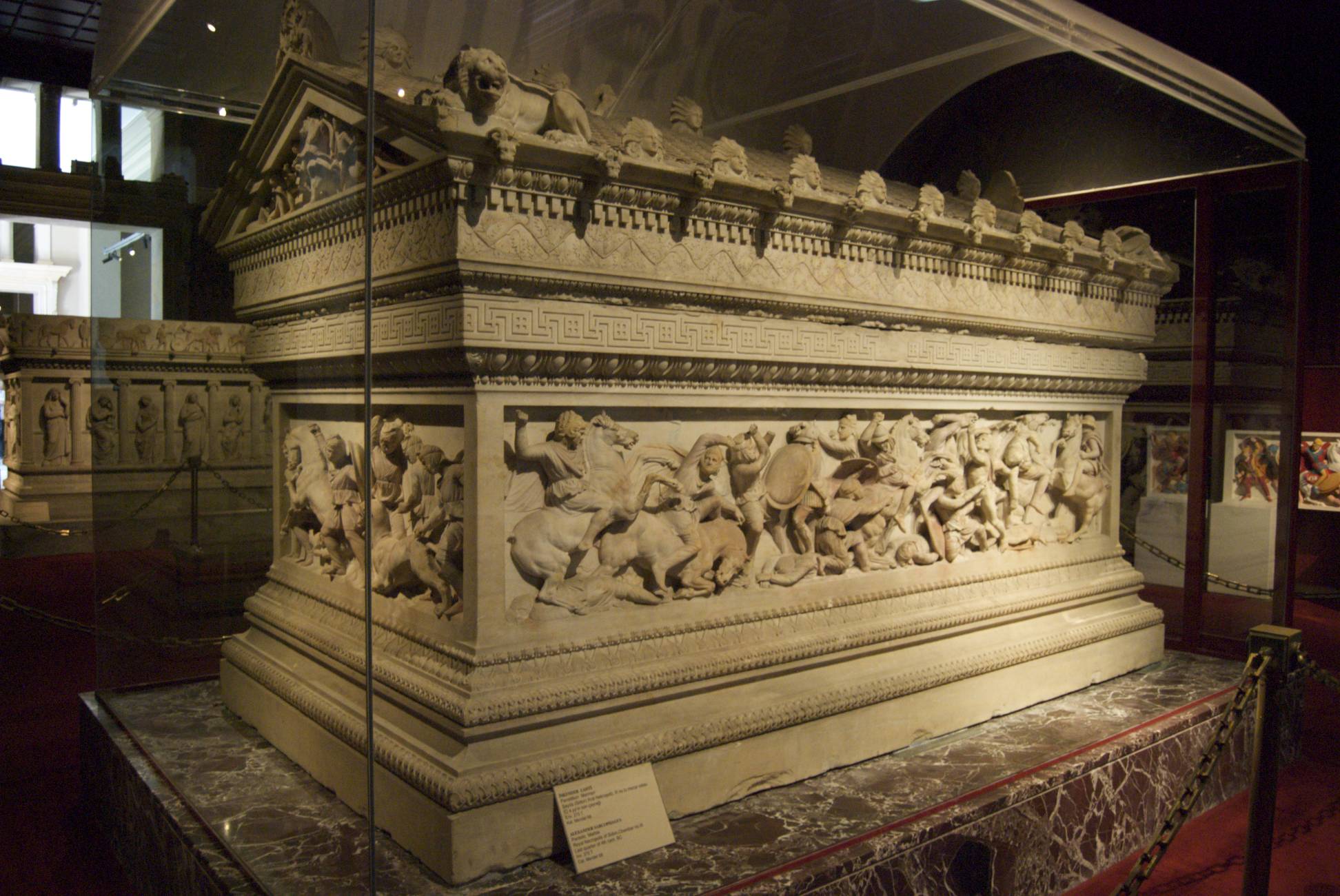
Das sogenannte Alexanderreich bezeichnet in der althistorischen Forschung jenes Großreich der Antike, das sich unter Alexander dem Großen im Laufe des Alexanderzugs herausgebildet hatte und in seiner vollen Größe von 324 bis etwa 319 v. Chr. bestand. Da Alexanders politische Stellung in einigen Gebieten unterschiedlich legitimiert war und er seine Herrschaft auch entsprechend regional verschieden ausübte, lässt sich diesem Staatsgebilde kein geographischer Raumbegriff außer dem Namen seines Herrschers zuordnen.
Das Alexanderreich basierte im Wesentlichen auf einer Personalunion von dreierlei verschiedenen Herrschaftsbereichen: Jenem von Makedonien, des Altpersischen Reichs und Ägyptens. Darüber hinaus hatte Alexander die Oberherrschaft über die meisten griechischen Städte im Hellenenbund von Korinth und einige barbarische Stämme des Balkans ausgeübt. Sein Reich erstreckte sich dabei über mindestens 19 Gebieten heutiger moderner Staaten (Griechenland, Mazedonien, Bulgarien, Türkei, Syrien, Jordanien, Israel, Libanon, Zypern, Ägypten, Libyen, Irak, Iran, Kuwait, Afghanistan, Turkmenistan, Tadschikistan, Usbekistan und Pakistan) und berührte einige weitere an ihren Peripherien (Ukraine, Rumänien, Albanien, Armenien, Aserbaidschan und Indien). Nach seinem Tod zerfiel sein Reich schließlich im Rahmen der Diadochenkriege und wurde unter seinen Nachfolgern, den Diadochen und Epigonen, aufgeteilt. Dabei bildete sich die hellenistische Staatenwelt heraus.
マケドニア王国(Μακεδονικό βασίλειο)は、紀元前7世紀に古代ギリシア人によって建国された歴史上の国家である。現在のギリシャ共和国西マケドニア地方・中央マケドニア地方の全域と、マケドニア共和国南東部ドイラン・ボグダンツィ・ゲヴゲリヤ及び南西部レセン・オフリド各基礎自治体の一部、ブルガリア・ブラゴエヴグラト州のギリシャとの国境地帯、アルバニアのポグラデツ県・コルチャ県・デヴォル県の一部にまたがる地域にあった。北西ギリシア方言群のひとつであるマケドニア方言を話した。
Macedonia (/ˌmæsɪˈdoʊniə/ (![]() listen)) or Macedon (/ˈmæsɪˌdɒn/; Greek: Μακεδονία, Makedonía), was an ancient kingdom on the periphery of Archaic and Classical Greece,[6] and later the dominant state of Hellenistic Greece.[7] The kingdom was founded and initially ruled by the royal Argead dynasty, which was followed by the Antipatrid and Antigonid dynasties. Home to the ancient Macedonians, the earliest kingdom was centered on the northeastern part of the Greek peninsula,[8] and bordered by Epirus to the west, Paeonia to the north, Thrace to the east and Thessaly to the south.
listen)) or Macedon (/ˈmæsɪˌdɒn/; Greek: Μακεδονία, Makedonía), was an ancient kingdom on the periphery of Archaic and Classical Greece,[6] and later the dominant state of Hellenistic Greece.[7] The kingdom was founded and initially ruled by the royal Argead dynasty, which was followed by the Antipatrid and Antigonid dynasties. Home to the ancient Macedonians, the earliest kingdom was centered on the northeastern part of the Greek peninsula,[8] and bordered by Epirus to the west, Paeonia to the north, Thrace to the east and Thessaly to the south.
Before the 4th century BC, Macedonia was a small kingdom outside of the area dominated by the great city-states of Athens, Sparta, and Thebes, and briefly subordinate to Achaemenid Persia.[3] During the reign of the Argead king Philip II (359–336 BC), Macedonia subdued mainland Greece and Thrace through conquest and diplomacy. With a reformed army containing phalanxes wielding the sarissa pike, Philip II defeated the old powers of Athens and Thebes in the Battle of Chaeronea in 338 BC. Philip II's son Alexander the Great, leading a federation of Greek states, accomplished his father's objective of commanding the whole of Greece when he destroyed Thebes after the city revolted. Pro-Macedonian Athenian oligarch, Philippides of Paiania was instrumental in the defeat of Chaeronea by assisting in king Philip's cause. He was prosecuted as a traitor known in the speech Hypereides against Philippides, known from Athenaeus[9]. During Alexander's subsequent campaign of conquest, he overthrew the Achaemenid Empire and conquered territory that stretched as far as the Indus River. For a brief period, his empire was the most powerful in the world – the definitive Hellenistic state, inaugurating the transition to a new period of Ancient Greek civilization. Greek arts and literature flourished in the new conquered lands and advances in philosophy, engineering, and science spread throughout much of the ancient world. Of particular importance were the contributions of Aristotle, tutor to Alexander, whose writings became a keystone of Western philosophy.
After Alexander's death in 323 BC, the ensuing wars of the Diadochi, and the partitioning of Alexander's short-lived empire, Macedonia remained a Greek cultural and political center in the Mediterranean region along with Ptolemaic Egypt, the Seleucid Empire, and the Kingdom of Pergamon. Important cities such as Pella, Pydna, and Amphipolis were involved in power struggles for control of the territory. New cities were founded, such as Thessalonica by the usurper Cassander (named after his wife Thessalonike of Macedon).[10] Macedonia's decline began with the Macedonian Wars and the rise of Rome as the leading Mediterranean power. At the end of the Third Macedonian War in 168 BC, the Macedonian monarchy was abolished and replaced by Roman client states. A short-lived revival of the monarchy during the Fourth Macedonian War in 150–148 BC ended with the establishment of the Roman province of Macedonia.
The Macedonian kings, who wielded absolute power and commanded state resources such as gold and silver, facilitated mining operations to mint currency, finance their armies and, by the reign of Philip II, a Macedonian navy. Unlike the other diadochi successor states, the imperial cult fostered by Alexander was never adopted in Macedonia, yet Macedonian rulers nevertheless assumed roles as high priests of the kingdom and leading patrons of domestic and international cults of the Hellenistic religion. The authority of Macedonian kings was theoretically limited by the institution of the army, while a few municipalities within the Macedonian commonwealth enjoyed a high degree of autonomy and even had democratic governments with popular assemblies.
Le royaume de Macédoine (en grec ancien Μακεδονία / Makédonia) est un État grec antique situé au nord de la Grèce, correspondant aujourd'hui principalement à la Macédoine grecque. Il est centré sur la partie nord-est de la péninsule grecque, bordé par l’Épire à l'ouest, la Péonie au nord, la Thrace à l'est et la Thessalie au sud. Royaume de la Grèce aux époques archaïque et classique, il devient l'État dominant du monde grec durant l'époque hellénistique.
L'existence du royaume est attestée au tout début du VIIe siècle av. J.-C. avec à sa tête la dynastie des Argéades. Il connait un formidable essor sous le règne de Philippe II, qui étend sa domination sur la Grèce continentale en évinçant Athènes et la ligue chalcidienne pour ensuite fonder la Ligue de Corinthe. Son fils Alexandre le Grand est à l'origine de la conquête de l'immense empire perse et de l'expansion de l'hellénisme en Asie à la fin du IVe siècle av. J.-C. À son apogée, le royaume de Macédoine, avec ses dépendances, s’étendait du bassin méditerranéen à la vallée de l’Indus, en passant par Thèbes en Égypte, par Babylone en Mésopotamie et par Samarcande en Sogdiane. Après la mort d'Alexandre le Grand, la Macédoine passe brièvement sous la tutelle des Antipatrides dans le contexte des guerres des diadoques. En 277, la royauté échoit à Antigone II Gonatas, qui installe la dynastie des Antigonides, laquelle règne jusqu'en 168, lorsque la Macédoine est conquise par les Romains. En 146, la Macédoine devient une province romaine.
Les Macédoniens sont apparentés aux Grecs, mêlés à des peuples thraco-illyriens « indigènes » ; ils parlent l’ancien macédonien, une langue hellénique différente du grec classique. Par ailleurs le pays n'est pas organisé autour de cités indépendantes mais autour d'une aristocratie foncière dirigée par le roi des Macédoniens (et non de Macédoine), expliquant que les Grecs de l'époque classique puissent les considérer comme des « barbares ».
Il regno di Macedonia (in greco antico: Μακεδονία, Makedonìa) è stato un regno del mondo antico, che si trovava nella parte meridionale della Penisola balcanica; originariamente il suo territorio corrispondeva all'omonima regione collocata nella parte nord-orientale dell'antica Grecia[1] tra l'Epiro a ovest, la Tracia a est, la Peonia a nord e la Tessaglia a sud.
Fondato, secondo la tradizione, agli inizi dell'VIII secolo a.C. dal mitico re Carano, con Filippo II (che fu sovrano dal 359 al 336 a.C.), il regno di Macedonia iniziò la sua ascesa da piccolo stato periferico fino a raggiungere il dominio di tutta la Grecia. Grazie al figlio di Filippo, Alessandro Magno (re dal 336 a.C. al 323 a.C.), il regno si trasformò in un impero che si estendeva dalla penisola ellenica fino al fiume Indo e comprendeva i territori di quello che era stato l'Impero achemenide.
Alla morte di Alessandro Magno, l'impero macedone si disgregò nei regni ellenistici, governati dai Diadochi, i "successori" del re. Alcuni di essi diedero inizio, nelle regioni da loro governate, a delle dinastie di stirpe macedone che avrebbero regnato per secoli, come la dinastia seleucide nell'omonimo impero, che perdurò fino alla deposizione di Filippo II Filoromeo per opera di Pompeo nel 63 a.C.), e la dinastia tolemaica in Egitto, che rimase sul trono sino alla morte di Cleopatra nel 30 a.C.
Alla morte di Alessandro IV, figlio del Magno ed ultimo rappresentante della dinastia argeade, il regno di Macedonia fu governato dapprima dalla dinastia antipatride e poi da quella antigonide, pur con le brevi parentesi dei regni di Pirro, Lisimaco e Tolomeo Cerauno.
Con la battaglia di Pidna (168 a.C.), il regno fu conquistato dai Romani, che lo annetterono definitivamente nel 148 a.C., dopo aver domato la breve riscossa dell'ultimo re macedone Andrisco (Filippo VI) e trasformato la Macedonia in una provincia della repubblica romana.
El Reino de Macedonia fue un Estado griego de la antigüedad clásica y de la helenística, en el norte de la actual Grecia, bordeada por el Reino de Epiro en el oeste y la región de Tracia en el este. Este reino se consolidó durante el siglo V a. C. y experimentó un importante ascenso de su poder durante el siglo IV a. C. con el gobierno de Filipo II, que convirtió Macedonia en la principal potencia de Grecia. Su hijo Alejandro Magno (Alejandro III ) conquistó la mayor parte del mundo conocido, inaugurando el Período Helenístico de la historia griega.
Macedonia se divide tradicionalmente en dos grandes regiones, la Alta y la Baja Macedonia. Era un país de trigo y pastos, de aldeanos y jinetes, y con una costa marítima reducida. Los historiadores creen que sus habitantes eran griegos de dialecto dórico, al igual que los de la región de Epiro, Rodas y el Peloponeso, y que hablaban un dialecto griego muy cercano al de estas regiones (véase Antiguo idioma macedonio).
Македо́ния (греч. Μακεδονία) — античное греческое государство на Балканском полуострове со столицей в Эгесе, на западе граничившее с государством Эпир, на востоке — с Фракией, на юге — с Фессалией. Отсюда Александр Македонский начал поход на Персию.
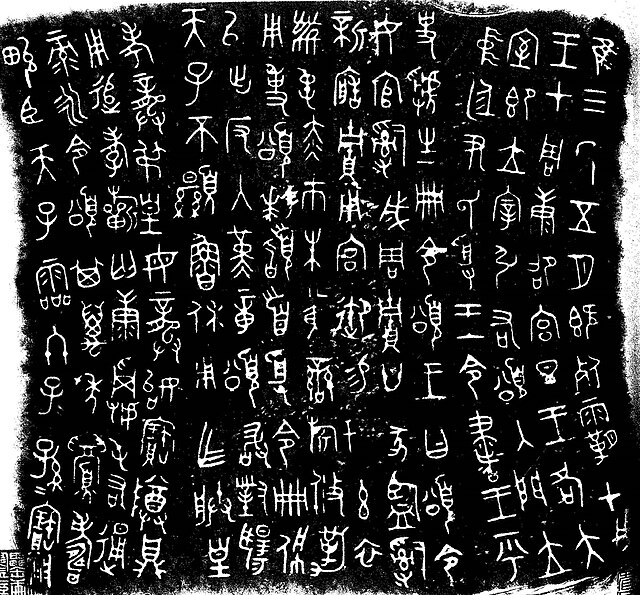
上古汉语指的是周朝至汉朝时期的汉语,继承自原始汉语,依照演进又可细分先秦音系与汉代音系。因为上古汉语的构拟不建立在历史比较语言学的基础上,因汉字非拼音文字,故不能依据不同时代的“拼法”来推断古读音。此一原则和印欧语不同。
上古音研究的基本方法是从中古汉语(《切韵》音系)倒推上古音。在中古音的基础上,可以用《诗经》的韵部和谐声系列(形声字)来推测古代的发音,还可以用汉语方言的存古特征和一些外部证据(汉藏语系、壮侗语系、苗瑶语系等语言中的汉语同源词和借词)。
Als Altchinesisch (auch archaisches Chinesisch) wird im Allgemeinen die chinesische Sprache der Zhou-Dynastie in der Zeit vor 256 v. Chr. bezeichnet, wobei die Definition je nach Sichtweise variiert.
In der historischen Phonologie des Chinesischen wird mit „Altchinesisch“ diejenige Entwicklungsstufe der Sprache bezeichnet, deren Phonologie in den Reimen des Shi Jing und in den ältesten Zeichen der chinesischen Schrift fassbar ist, während aus syntaktischer Sicht die gesamte Sprache bis zum Beginn der Qin-Dynastie unter diesem Namen zusammengefasst ist. Die älteste Form des Chinesischen findet sich in den Orakelknocheninschriften aus der späteren Shang-Dynastie. Aus der frühen oder westlichen Zhou-Dynastie (11. Jahrhundert v. Chr. – 771 v. Chr.) und der Zeit der Frühlings- und Herbstannalen (bis 481 v. Chr.) stammen sowohl Inschriften, insbesondere auf Bronzegefäßen, als auch erste literarische Werke wie die Gedichtsammlung des Shi Jing und die älteren Teile des Shujing. Die letzte Stufe des Altchinesischen ist das klassische Chinesisch, die Sprache der Zeit der Streitenden Reiche (5.–3. Jahrhundert v. Chr.), die als Literatursprache bis in die Neuzeit Verwendung fand.
Durch einige syntaktische Eigenschaften wird das Altchinesische von seinem Nachfolger, dem Mittelchinesischen abgegrenzt. Es finden sich jedoch auch innerhalb des Altchinesischen Unterschiede. So besaß es ursprünglich eine Kopula 惟, 唯, 隹, 維 wéi, die im Klassischen Chinesisch auf die Bedeutung „nur“ reduziert wurde. Umgekehrt stellt etwa die Konjunktion 而 ér „dann“ eine Innovation des jüngeren Altchinesisch dar.
Das Altchinesische war mutmaßlich keine Tonsprache.[1] Die heute typischen Töne entwickelten sich erst, wie in anderen Ost- und Südostasiatischen Sprachen (vergleiche Tai-Kadai oder Vietnamesisch), ab dem Mittelchinesischen.[2][3]
 *Mediterranean Sea
*Mediterranean Sea
 Egypt
Egypt

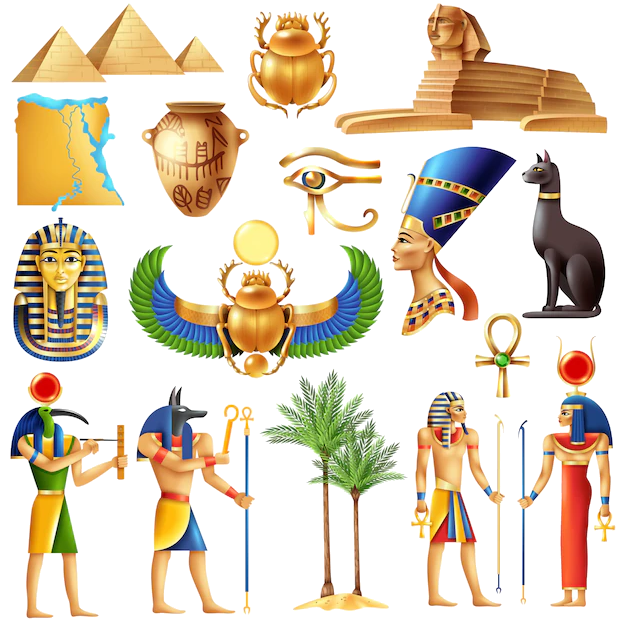 Ancient Egypt
Ancient Egypt

 History
History
 D 3000 - 2500 BC
D 3000 - 2500 BC

 History
History
 B 5000 - 4000 BC
B 5000 - 4000 BC

 History
History
 E 2500 - 2000 BC
E 2500 - 2000 BC

 History
History
 F 2000 - 1500 BC
F 2000 - 1500 BC

 History
History
 G 1500 - 1000 BC
G 1500 - 1000 BC

 History
History
 H 1000 - 500 BC
H 1000 - 500 BC

 History
History
 I 500 - 0 BC
I 500 - 0 BC

 History
History
 J 0 - 500 AD
J 0 - 500 AD

 World Heritage
World Heritage

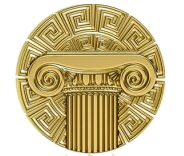 Civilization
Civilization
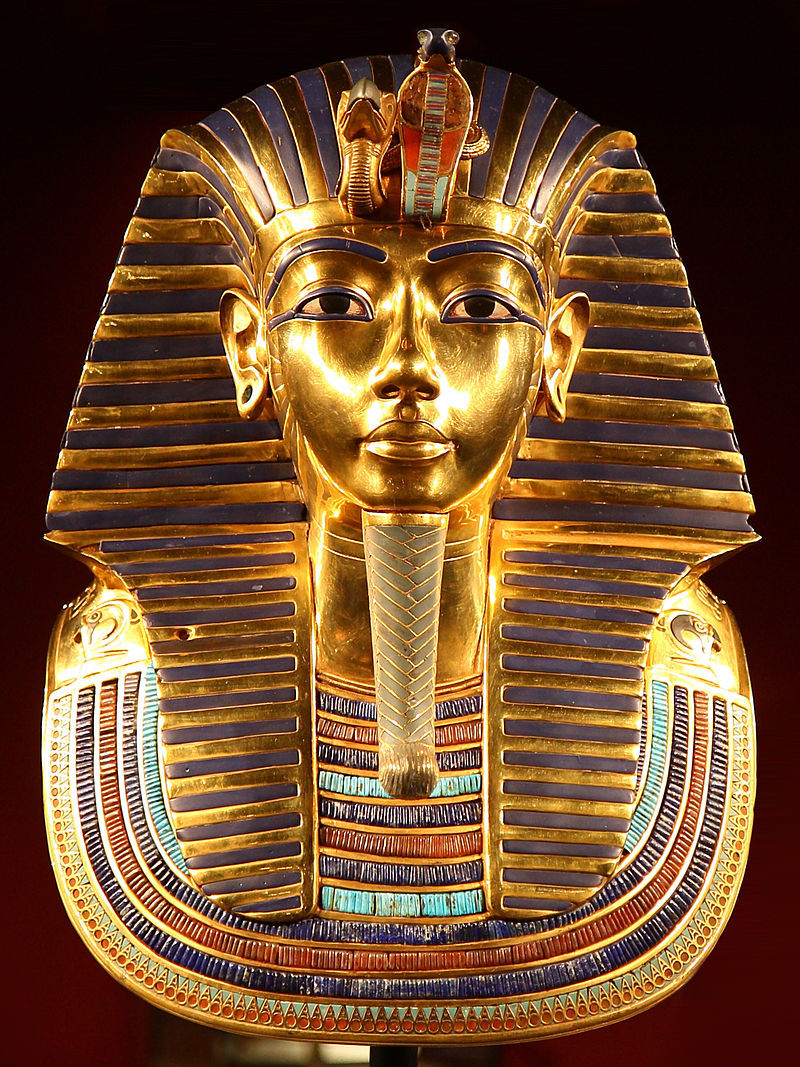
古埃及(阿拉伯语:مصر القديمة)是位于非洲东北部尼罗河中下游地区的一段时间跨度近3000年的古代文明,开始于公元前32世纪左右时美尼斯统一上下埃及建立第一王朝,终止于公元前343年波斯再次征服埃及,虽然之后古埃及文化还有少量延续,但到公元以后的时代,古埃及已经彻底被异族文明所取代,在连象形文字也被人们遗忘后,古代史前社会留给后人的是宏伟的建筑与无数谜团,1798年,拿破仑远征埃及,发现罗塞塔石碑,1822年法国学者商博良解读象形文字成功,埃及学才诞生,古埃及文明才重见天日。直到今日都还不断被挖掘出来。
古埃及的居民是由北非的土著居民和来自西亚的游牧民族塞姆人融合形成的多文化圈。约公元前6000年,因为地球轨道的运转规律性变化、间冰期的高峰过去等客观气候因素,北非茂密的草原开始退缩,人们放弃游牧而开始寻求固定的水源以耕作,即尼罗河河谷一带,公元前4千年后半期,此地逐渐形成国家,至公元前343年为止,共经历前王朝、早王朝、古王国、第一中间期、中王国、第二中间期、新王国、第三中间期、后王朝9个时期31个王朝的统治(参见“古埃及历史”一节)。其中古埃及在十八王朝时(公元前15世纪)达到鼎盛,南部尼罗河河谷地带的上埃及的领域由现在的苏丹到埃塞俄比亚,而北部三角洲地区的下埃及除了现在的埃及和部分利比亚以外,其东部边界越过西奈半岛直达迦南平原。[1]
在社会制度方面,古埃及有自己的文字系统,完善的行政体系和多神信仰的宗教系统,其统治者称为法老,因此古埃及又称为法老时代或法老埃及[2]。古埃及的国土紧密分布在尼罗河周围的狭长地带,是典型的水力帝国[来源请求]。古埃及跟很多文明一样,具有保存遗体的丧葬习俗,透过这些木乃伊的研究能一窥当时人们的日常生活,对古埃及的研究在学术界已经形成一门专门的学科,称为“埃及学”。
古埃及文明的产生和发展同尼罗河密不可分,如古希腊历史学家希罗多德所言:“埃及是尼罗河的赠礼。”古埃及时,尼罗河几乎每年都泛滥,淹没农田,但同时也使被淹没的土地成为肥沃的耕地。尼罗河还为古埃及人提供交通的便利,使人们比较容易的来往于河畔的各个城市之间。古埃及文明之所以可以绵延数千年而不间断,另一个重要的原因是其相对与外部世界隔绝的地理环境,古埃及北面和东面分别是地中海和红海,而西面则是沙漠,南面是一系列大瀑布,只有东北部有一个通道通过西奈半岛通往西亚。这样的地理位置,使外族不容易进入埃及,从而保证古埃及文明的稳定延续。相比较起来,周围相对开放的同时代的两河流域文明则经常被不同民族所主宰,两者对后世所带来的价值观也完全不同。Altes Ägypten ist die allgemeine Bezeichnung für das Land Ägypten im Altertum. Der ägyptische Name lautete Kemet und bedeutet „schwarzes Land“. Kemet bezeichnet das Delta des Nils und geht auf den schwarzen Schlamm zurück, der nach der jährlichen Nilschwemme zurückblieb und eine fruchtbare Ernte garantierte. Eine andere Bezeichnung für das Land des Altertums war Ta meri (T3 mrj), was mit „geliebtes Land“ übersetzt wird.[1]
エジプトは不毛の砂漠地帯であるが、毎年春のナイル川の増水で水に覆われる地域には河土が運ばれて堆積し、農耕や灌漑が可能になる。この氾濫原だけが居住に適しており、主な活動はナイル河畔で行われた。ナイル川の恩恵を受ける地域はケメト(黒い大地)と呼ばれ、ケメトはエジプトそのものを指す言葉として周囲に広がるデシェレト(赤い大地、ナイル川の恩恵を受けない荒地)と対比される概念だった。このケメトの範囲の幅は非常に狭く、ナイル川の本流・支流から数kmの範囲にとどまっていた。しかしながら川の周囲にのみ人が集住しているということは交通においては非常に便利であり、川船を使って国内のどの地域にも素早い移動が可能であった。この利便性は、ナイル河畔に住む人々の交流を盛んにし、統一国家を建国し維持する基盤となった。
ナイル川本流からナイル川の上流は谷合でありナイル川1本だけが流れ、下流はデルタ地帯(ナイル川デルタ)が広がっている。最初に上流地域(上エジプト)と下流地域(下エジプト)[1]でそれぞれ違った文化が発展した後に統一されたため、ファラオ(王)の称号の中に「上下エジプト王」という部分が残り、古代エジプト人も自国のことを「二つの国」と呼んでいた。
毎年のナイル川の氾濫を正確に予測する必要から天文観測が行われ、太陽暦が作られた。太陽とシリウス星が同時に昇る頃、ナイル川は氾濫したという。また、氾濫が収まった後に農地を元通り配分するため、測量術、幾何学、天文学が発達した。ヒエログリフから派生したワディ・エル・ホル文字と原シナイ文字(原カナン文字)は世界の殆どのアルファベットの起源となったされる。
エジプト文明と並ぶ最初期における農耕文明の一つであるメソポタミア文明が、民族移動の交差点にあたり終始異民族の侵入を被り支配民族が代わったのと比べ、地理的に孤立した位置にあったエジプトは比較的安定しており、部族社会が城壁を廻らせて成立する都市国家の痕跡は今の所発見されていない。
Ancient Egypt was a civilization of ancient North Africa, concentrated along the lower reaches of the Nile River in the place that is now the country Egypt. Ancient Egyptian civilization followed prehistoric Egypt and coalesced around 3100 BC (according to conventional Egyptian chronology)[1] with the political unification of Upper and Lower Egypt under Menes (often identified with Narmer).[2] The history of ancient Egypt occurred as a series of stable kingdoms, separated by periods of relative instability known as Intermediate Periods: the Old Kingdom of the Early Bronze Age, the Middle Kingdom of the Middle Bronze Age and the New Kingdom of the Late Bronze Age.
Egypt reached the pinnacle of its power in the New Kingdom, ruling much of Nubia and a sizable portion of the Near East, after which it entered a period of slow decline. During the course of its history Egypt was invaded or conquered by a number of foreign powers, including the Hyksos, the Libyans, the Nubians, the Assyrians, the Achaemenid Persians, and the Macedonians under the command of Alexander the Great. The Greek Ptolemaic Kingdom, formed in the aftermath of Alexander's death, ruled Egypt until 30 BC, when, under Cleopatra, it fell to the Roman Empire and became a Roman province.[3]
The success of ancient Egyptian civilization came partly from its ability to adapt to the conditions of the Nile River valley for agriculture. The predictable flooding and controlled irrigation of the fertile valley produced surplus crops, which supported a more dense population, and social development and culture. With resources to spare, the administration sponsored mineral exploitation of the valley and surrounding desert regions, the early development of an independent writing system, the organization of collective construction and agricultural projects, trade with surrounding regions, and a military intended to assert Egyptian dominance. Motivating and organizing these activities was a bureaucracy of elite scribes, religious leaders, and administrators under the control of a pharaoh, who ensured the cooperation and unity of the Egyptian people in the context of an elaborate system of religious beliefs.[4][5]
The many achievements of the ancient Egyptians include the quarrying, surveying and construction techniques that supported the building of monumental pyramids, temples, and obelisks; a system of mathematics, a practical and effective system of medicine, irrigation systems and agricultural production techniques, the first known planked boats,[6] Egyptian faience and glass technology, new forms of literature, and the earliest known peace treaty, made with the Hittites.[7] Ancient Egypt has left a lasting legacy. Its art and architecture were widely copied, and its antiquities carried off to far corners of the world. Its monumental ruins have inspired the imaginations of travelers and writers for centuries. A new-found respect for antiquities and excavations in the early modern period by Europeans and Egyptians led to the scientific investigation of Egyptian civilization and a greater appreciation of its cultural legacy.[8]
L'Égypte antique est une ancienne civilisation du nord-est de l'Afrique, concentrée le long du cours inférieur du Nil, dans ce qui constitue aujourd'hui l'Égypte.
La civilisation de l'Égypte antique prend forme autour de -31501 avec l'unification politique de la Haute-Égypte au sud et de la Basse-Égypte au nord sous le règne du premier roi et se développe sur plus de trois millénaires2. Son histoire est parsemée d'une série de périodes stables politiquement, entrecoupées de plusieurs périodes intermédiaires, plus troublées. L'Égypte antique atteint son apogée sous le Nouvel Empire puis entre dans une période de lent déclin. Le pays subit les assauts répétés de puissances étrangères dans cette période tardive et le règne des pharaons prend officiellement fin en -30 où l'Empire romain conquiert l'Égypte pour en faire une province3.
Le succès de la civilisation égyptienne antique découle en partie de sa capacité à s'adapter aux conditions de la vallée du Nil. L'inondation prévisible du fleuve et le contrôle de l'irrigation de la vallée produit des récoltes excédentaires qui alimentent le développement social et culturel du pays. Ce surplus agricole donne à l'administration les moyens de financer l'exploitation minière de la vallée et des régions voisines du désert. Le développement rapide d'un système d'écriture indépendant, l'organisation de constructions collectives et de projets agricoles, les relations commerciales avec les pays voisins et une armée solide permettent à l'Égypte d'affirmer sa domination sur la région. Toutes ces activités sont organisées par une bureaucratie de scribes, de dirigeants religieux et d'administrateurs sous le contrôle du pharaon qui assure l'unité du peuple égyptien dans le cadre d'un système complexe de croyances religieuses4,5.
Les nombreuses réalisations des Égyptiens de l'Antiquité comprennent l'extraction minière, l'arpentage et les techniques de construction qui facilitent la construction de pyramides monumentales, de temples et d'obélisques. On compte également à leur crédit le développement des mathématiques, de la médecine, de l'irrigation et de la production agricole, la construction des premiers navires connus, la faïence égyptienne, de nouvelles formes de littérature6. Du rassemblement des tribus primitives qui créent le premier royaume pharaonique jusqu'à son absorption au Ier siècle av. J.-C., l'Égypte antique est le théâtre d'évènements majeurs qui influencent assurément la culture et l'imaginaire des peuples lui ayant succédé. Son art et son architecture sont largement copiés et ses antiquités sont disséminées aux quatre coins du monde. Un regain d'intérêt pour la période antique au début de l'époque moderne conduit à de nombreuses investigations scientifiques de la civilisation égyptienne, notamment par des fouilles, et à une meilleure appréciation de son héritage culturel, pour l'Égypte et le monde7.
Con Antico Egitto si intende la civiltà sviluppatasi lungo la Valle del Nilo a partire dalle cateratte, a sud e al confine con l’attuale Sudan[N 1], alla foce, al delta, nel Mar Mediterraneo, per un’estensione complessiva di circa 1000 km. Benché il territorio fosse molto più vasto, comprendendo gran parte anche del Deserto Libico-Nubiano, gli insediamenti umani, fin dai tempi più remoti, si svilupparono solo nella stretta fascia verdeggiante a ridosso delle rive del fiume larga, in alcuni punti anche solo poche centinaia di metri.
Fin dal 3500 a.C., di pari passo con l'avvento dell'agricoltura, in particolare la coltivazione del grano, dell’orzo e del lino, si ha contezza di insediamenti umani specie lungo le rive del Nilo[1]. Le piene annuali del fiume, infatti, favorivano la coltivazione anche con più raccolti annui grazie ai sedimenti, particolarmente fertili (Limo), che il fiume, nel suo ritirarsi, lasciava sul terreno. Ciò comportò, fin dai tempi più remoti, conseguentemente, la necessità di controllare, incanalare e conservare le acque onde garantire il costante approvvigionamento, vuoi per il sostentamento umano, vuoi per quello del bestiame e delle piantagioni.
Non è da escludersi che proprio la complessa necessità di dover far fronte alle esigenze connesse con la gestione dell’agricoltura, e segnatamente, delle acque nilotiche, abbia favorito proprio il formarsi delle prime comunità su territori parziali tuttavia ben differenziati e politicamente e geograficamente individuabili. Tali entità, normalmente individuate con il termine greco di nomoi, ben presto si costituirono in due distinte entità geo-politiche più complesse. Tale l’importanza del fiume Nilo, che attraversava tutto il paese, che anche le denominazioni di tali due macro-aree fanno riferimento al fiume: considerando che le sorgenti del Nilo, benché all'epoca non note, dovevano essere a sud, tale sarà l’Alto Egitto, mentre, di converso, l’area del delta, verso il Mediterraneo, sarà indicato come Basso Egitto[2].
Varie culture si susseguirono nella valle nilotica fin dal 3900 a.C. in quello che viene definito Periodo Predinastico. Un’entità embrionale di Stato può riconoscersi, invece, a partire dal 3200-3100 a.C. con la I dinastia e l’unificazione delle due macro-aree che resteranno, tuttavia, sempre distinte tanto che per tutta la storia del Paese i regnanti annovereranno tra i loro titoli quello di Signore delle Due Terre.
La storia dell’Antico Egitto copre, complessivamente, circa 4000 anni, dal 3900 a.C. (con il Periodo Predinastico) al 342 a.C. (con il Periodo tardo) e comprende, dal 3200 a.C., trenta dinastie regnanti riconosciute archeo-storicamente. A queste debbono esserne aggiunte altre, dette di comodo, giacché riferite, di fatto, non a governi autoctoni, o comunque derivanti dal Paese, bensì frutto di invasioni o di raggiungimento del potere da parte di regnanti stranieri. Avremo perciò una XXXI dinastia, costituita da re persiani, una XXXII dinastia macedone, che annovera un solo sovrano, Alessandro Magno, e una XXXIII dinastia, meglio nota come Dinastia tolemaica, nata dallo smembramento dell’impero di Alessandro.
Anche molti imperatori romani, occupato l’Egitto, non disdegnarono di assumere il titolo di faraone con titolatura geroglifica.
El Antiguo Egipto fue una civilización que se originó a lo largo del cauce medio y bajo del río Nilo, y que alcanza tres épocas de esplendor faraónico en los periodos denominados Imperio Antiguo, Imperio Medio, e Imperio Nuevo. Alcanzaba desde el delta del Nilo en el norte, hasta Elefantina, en la primera catarata del Nilo, en el sur, llegando a tener influencia desde el Éufrates hasta Jebel Barkal, en la cuarta catarata del Nilo, en épocas de máxima expansión. Su territorio también abarcó, en distintos periodos, el desierto oriental y la línea costera del mar Rojo, la península del Sinaí, y un gran territorio occidental dominando los dispersos oasis. Históricamente, fue dividido en Alto y Bajo Egipto, al sur y al norte respectivamente.
La civilización egipcia se desarrolló durante más de 3000 años. Comenzó con la unificación de algunas ciudades del valle del Nilo,1 alrededor del año 3150 a. C.,2 y convencionalmente se da por terminado en el año 31 a. C., cuando el Imperio romano conquistó y absorbió el Egipto ptolemaico, que desaparece como Estado.3 Este acontecimiento no representó el primer período de dominación extranjera, pero fue el que condujo a una transformación gradual en la vida política y religiosa del valle del Nilo, marcando el final del desarrollo independiente de su cultura. Su identidad cultural había comenzado a diluirse paulatinamente tras las conquistas de los reyes de Babilonia (siglo VI a. C.) y Macedonia (siglo IV a. C.), desapareciendo su religión con la llegada del cristianismo, en la época de Justiniano I, cuando en 535 fue prohibido el culto a la diosa Isis, en el templo de File.
Egipto tiene una combinación única de características geográficas, situada en el África nororiental y confinada por Libia, Sudán, el mar Rojo y el mar Mediterráneo. El río Nilo fue la clave para el éxito de la civilización egipcia, ya que éste permitía el aprovechamiento de los recursos y ofrecía una significativa ventaja sobre otros oponentes: el légamo fértil depositado a lo largo de los bancos del Nilo tras las inundaciones anuales significó para los egipcios el practicar una forma de agricultura menos laboriosa que en otras zonas, liberando a la población para dedicar más tiempo y recursos al desarrollo cultural, tecnológico y artístico.
La vida se ordenaba en torno al desarrollo de un sistema de escritura y de una literatura independientes, así como en un cuidadoso control estatal sobre los recursos naturales y humanos, caracterizado sobre todo por la irrigación de la fértil cuenca del Nilo y la explotación minera del valle y de las regiones desérticas circundantes, la organización de proyectos colectivos como las grandes obras públicas, el comercio con las regiones vecinas de África del este y central y con las del Mediterráneo oriental y, finalmente, por un poderío militar capaz de derrotar a cualquier enemigo, y que mantuvieron una hegemonía imperial y la dominación territorial de civilizaciones vecinas en diversos períodos. La motivación y la organización de estas actividades estaba encomendada a una burocracia de élite sociopolítica y económica, los escribas, bajo el control del Faraón, un personaje semidivino, perteneciente a una sucesión de dinastías, que garantizaba la cooperación y la unidad del pueblo egipcio en el contexto de un elaborado sistema de creencias religiosas.45
Los muchos logros de los egipcios incluyen la extracción minera, la topografía y las técnicas de construcción que facilitaron el levantamiento de monumentales pirámides, templos y obeliscos, unos procedimientos matemáticos, una práctica médica eficaz, métodos de riego y técnicas de producción agrícola, las primeras naves conocidas,6 la tecnología del vidrio y de la fayenza, las nuevas formas de la literatura y el tratado de paz más antiguo conocido, firmado con los hititas.7 Egipto dejó un legado duradero, su arte y arquitectura fueron ampliamente copiados, y sus antigüedades se llevaron a los rincones más lejanos del mundo. Sus ruinas monumentales han inspirado la imaginación de los viajeros y escritores desde hace siglos. Un nuevo respeto por las antigüedades y excavaciones en la época moderna han llevado a la investigación científica de la civilización egipcia y a una mayor apreciación de su legado cultural.8
Древний Еги́пет (от др.-греч. Αἴγυπτος и лат. Aegyptus), самоназвание Та-кемет, Та-мери, Та-уи и др. (транслит. егип. tA-kmt, tA-mrj, tA-wy), Ке́ми (копт. Ⲭⲏⲙⲓ) — название исторического региона и культуры значительной цивилизации Древнего мира, существовавшей на северо-востоке Африки вдоль нижнего течения реки Нил. История Древнего Египта составляет около 40 веков и подразделяется исследователями на додинастический период (относится к финалу доисторического периода, краткий обзор которого также приводится в статье), династический период (основной этап существования египетской цивилизации протяжённостью около 27 веков), эллинистический период (синтез с греко-македонской культурой под властью династии Птолемеев), римский период (в составе древнеримского государства, как одна из важнейших провинций Римской империи). Временные границы существования древнеегипетской культуры, принятые исследователями, охватывают период с середины IV тысячелетия до н. э. до IV век н. э. Византийско-коптский период (в составе Византии) хотя и относится уже к раннему средневековью, при этом также иногда рассматривается в рамках изучения Древнего Египта. Временные границы начинаются с IV века и заканчиваются арабским завоеванием в VII веке.
Возвышение древнеегипетской цивилизации в большой степени было результатом её способности адаптироваться к условиям речной долины и дельты Нила. Регулярные ежегодные разливы, удобряющие почву плодородным илом, а также организация ирригационной системы земледелия позволяли производить зерновые культуры в избыточном количестве, обеспечивавшем социальное и культурное развитие. Концентрация людских и материальных ресурсов в руках администрации способствовала созданию и поддержанию сложной сети каналов, появлению регулярной армии и расширению торговли, а с постепенным развитием горнодобывающего дела, полевой геодезии и строительных технологий давала возможность организовывать коллективные возведения монументальных сооружений. Принуждающей и организующей силой в Древнем Египте был хорошо развитый государственный аппарат, состоявший из жрецов, писцов и администраторов во главе с фараоном, который часто обожествлялся в сложной системе религиозных верований с развитым культом погребальных обрядов.
Древний Египет оставил огромное культурное наследие для мировой цивилизации, произведения его искусства ещё в древности вывозились в различные уголки мира и широко копировались мастерами других стран. Своеобразные архитектурные формы — величественные пирамиды, храмы, дворцы и обелиски вдохновляли воображение путешественников и исследователей в течение многих столетий. Египетскими мастерами создавались прекрасные настенные росписи и статуи, были освоены способы производства стекла и фаянса, поэтами и писателями созданы новые формы в литературе. В числе научных достижений древних египтян было создание оригинальной системы письма, математика, практическая медицина, астрономические наблюдения и возникший на их основе календарь. Интерес к памятникам, артефактам и археологическим раскопкам в Древнем Египте, возникший на рубеже XVIII—XIX веков, привёл к созданию науки египтологии и возникновению направлений искусства (египтомания, египтизирующий стиль).
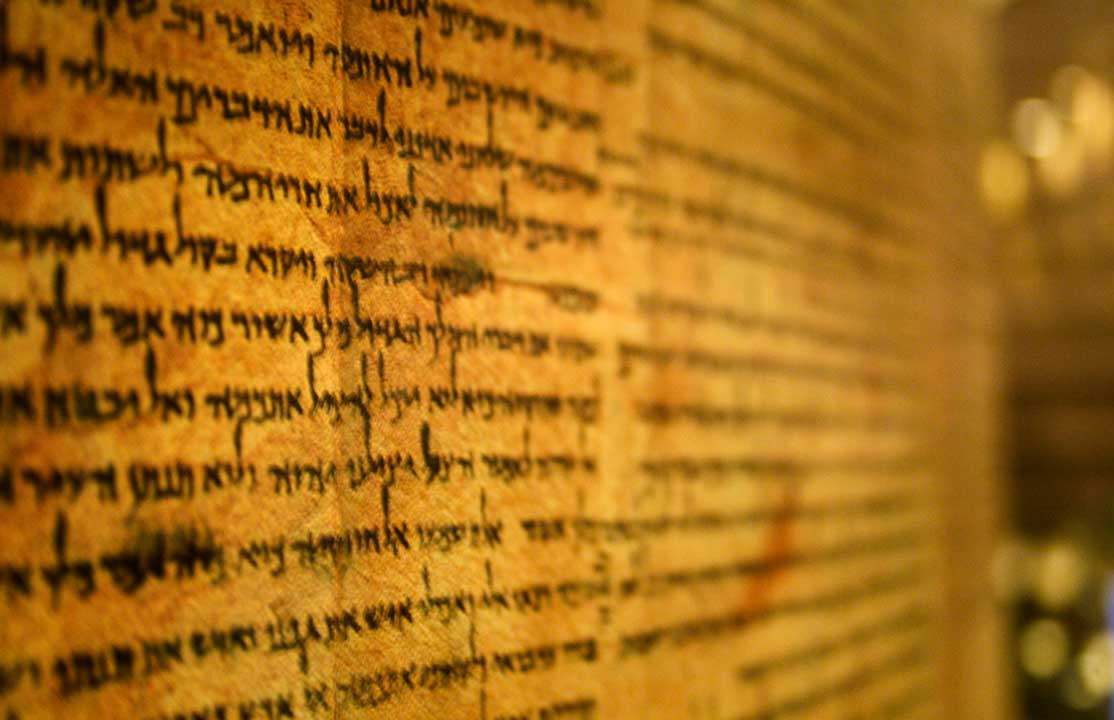

安比奥里克斯( 高卢语: Ambiorix,意为“在各个方位皆为王”)是罗马共和国末期高卢东北部(比利时高卢地区)贝尔盖人的一位王子,也是当地厄勃隆内斯部落的领袖。在十九世纪,由于在恺撒高卢征伐过程中对后者的顽强抵抗(见恺撒的高卢战记),安比奥里克斯逐渐成为比利时的民族英雄 。
Ambiorix war ein Doppelkönig des keltischen Stammes der Eburonen. Zusammen mit Catuvolcus regierte er in der Zeit um 54/53 v. Chr.[1] Unter seiner Führung lehnten sich die Eburonen im November 54 v. Chr. gegen die römische Besatzungsmacht auf. Bei Atuatuca wurden dabei eineinhalb Legionen vernichtet. Im Herbst 53 v. Chr. und erneut im Jahr 51 v. Chr. plünderten, verwüsteten und entvölkerten römische Kriegstruppen unter Gaius Iulius Caesar das Siedlungsgebiet der Eburonen zwischen Rhein und Maas.
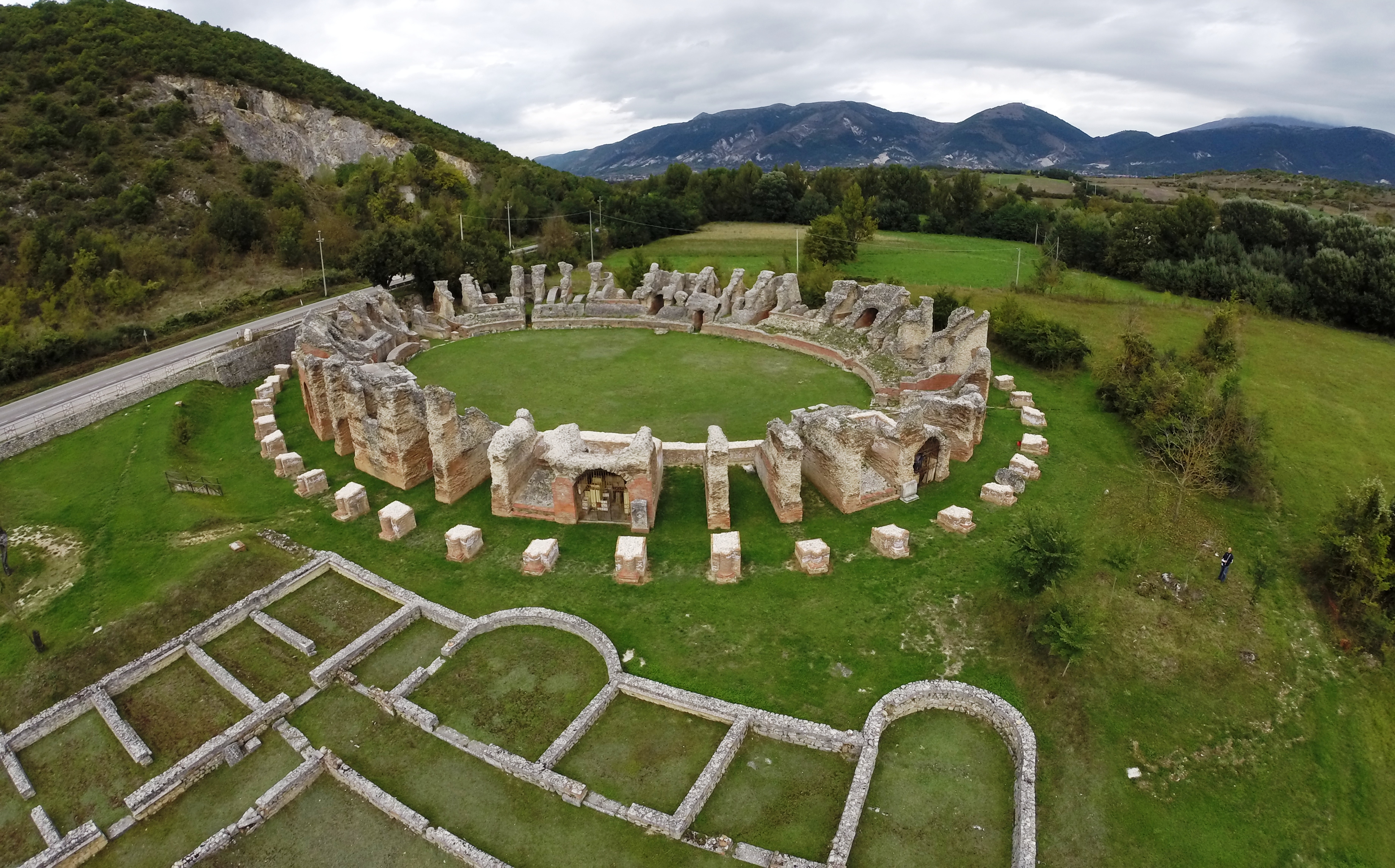
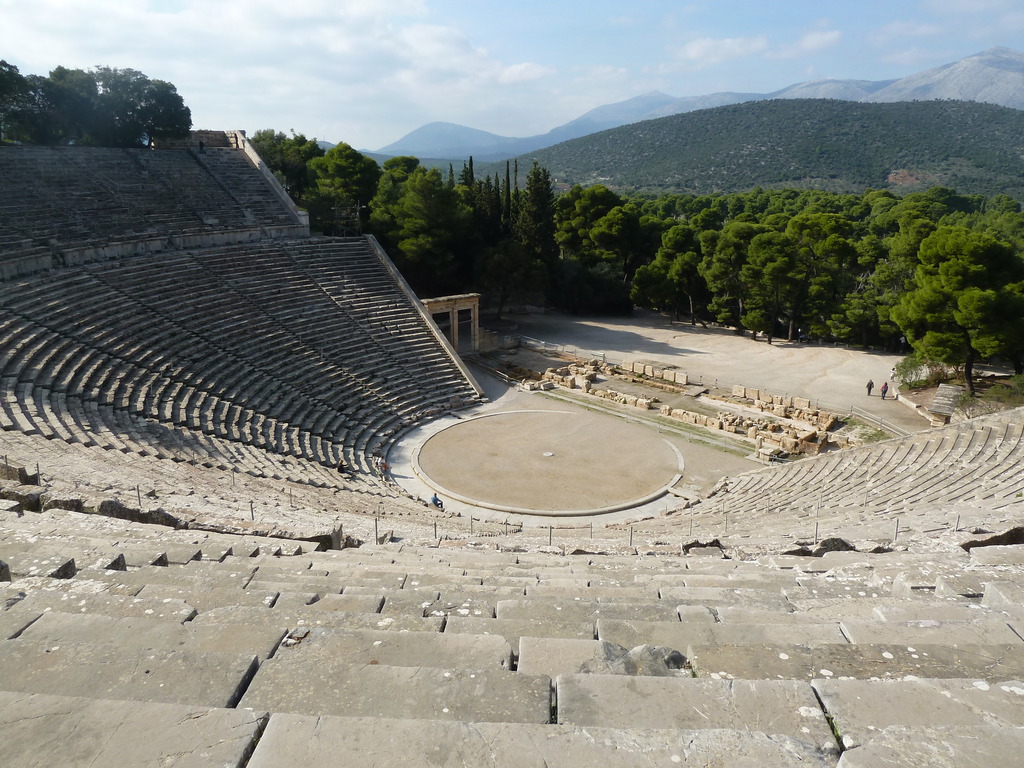
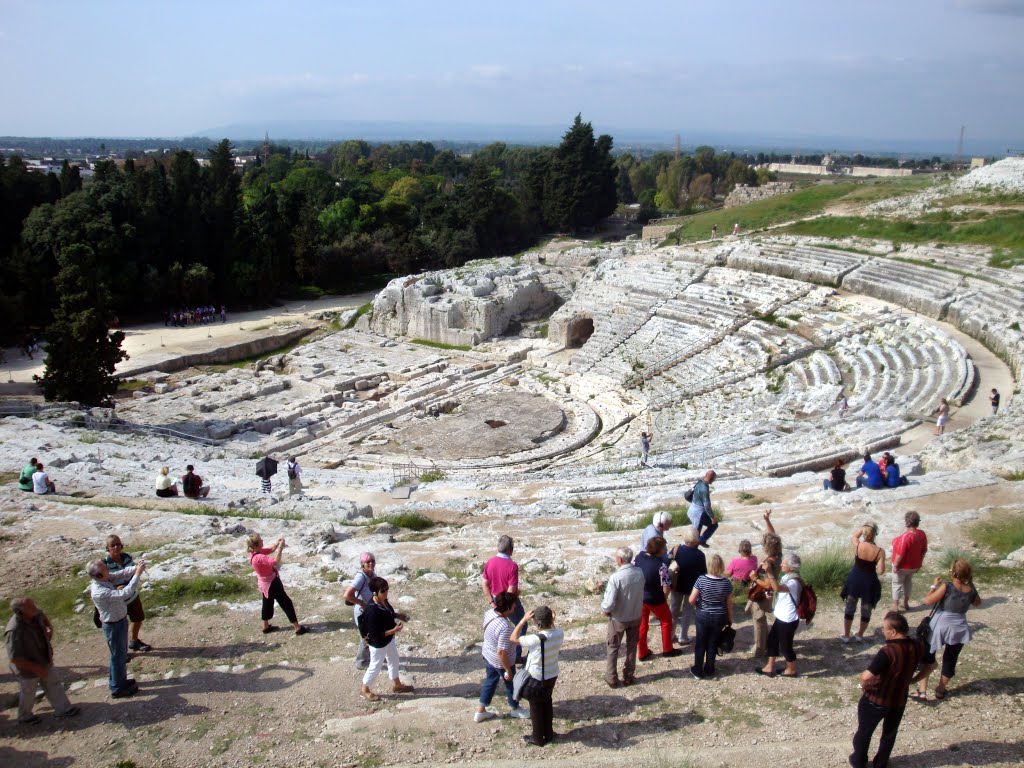
 Art
Art

 Religion
Religion
 Abruzzo
Abruzzo
 Architecture
Architecture
 Music
Music
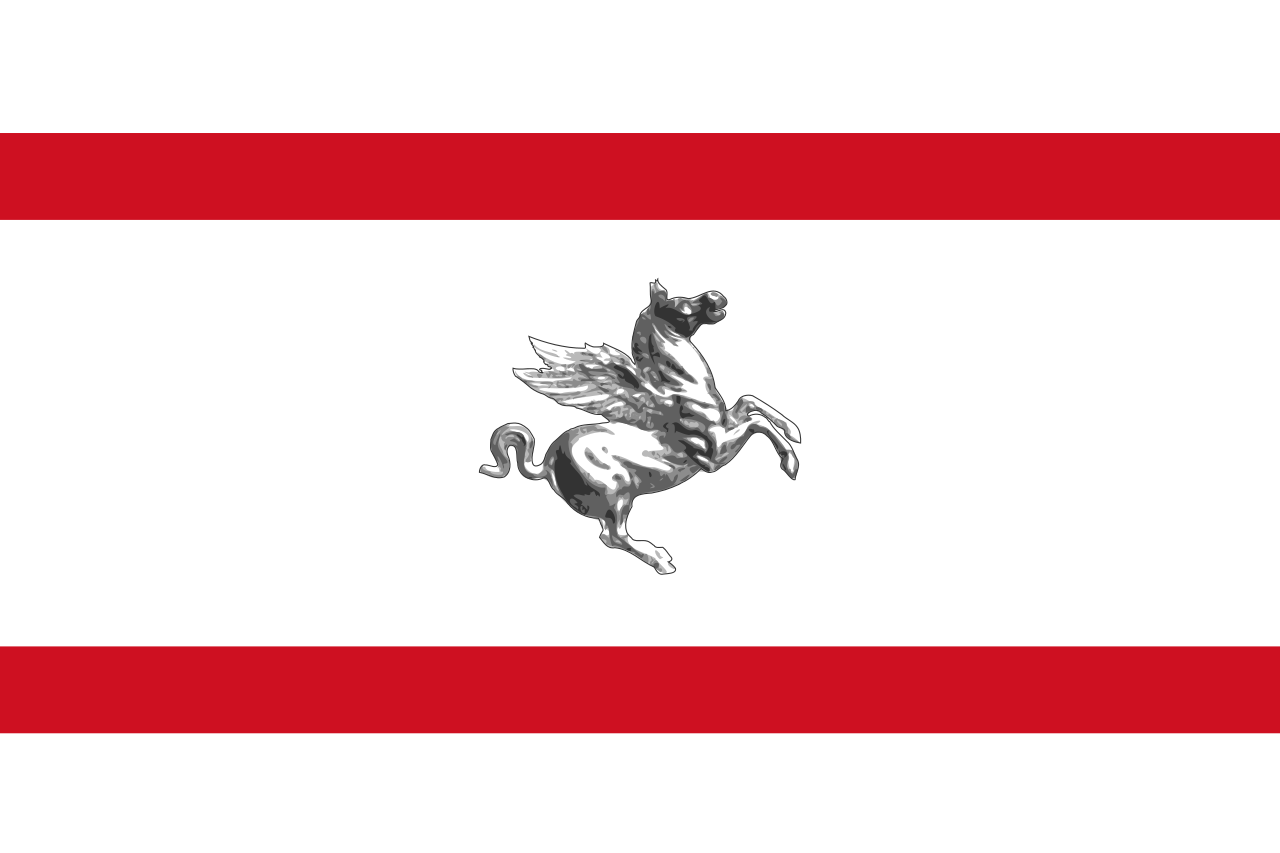 Toscana
Toscana
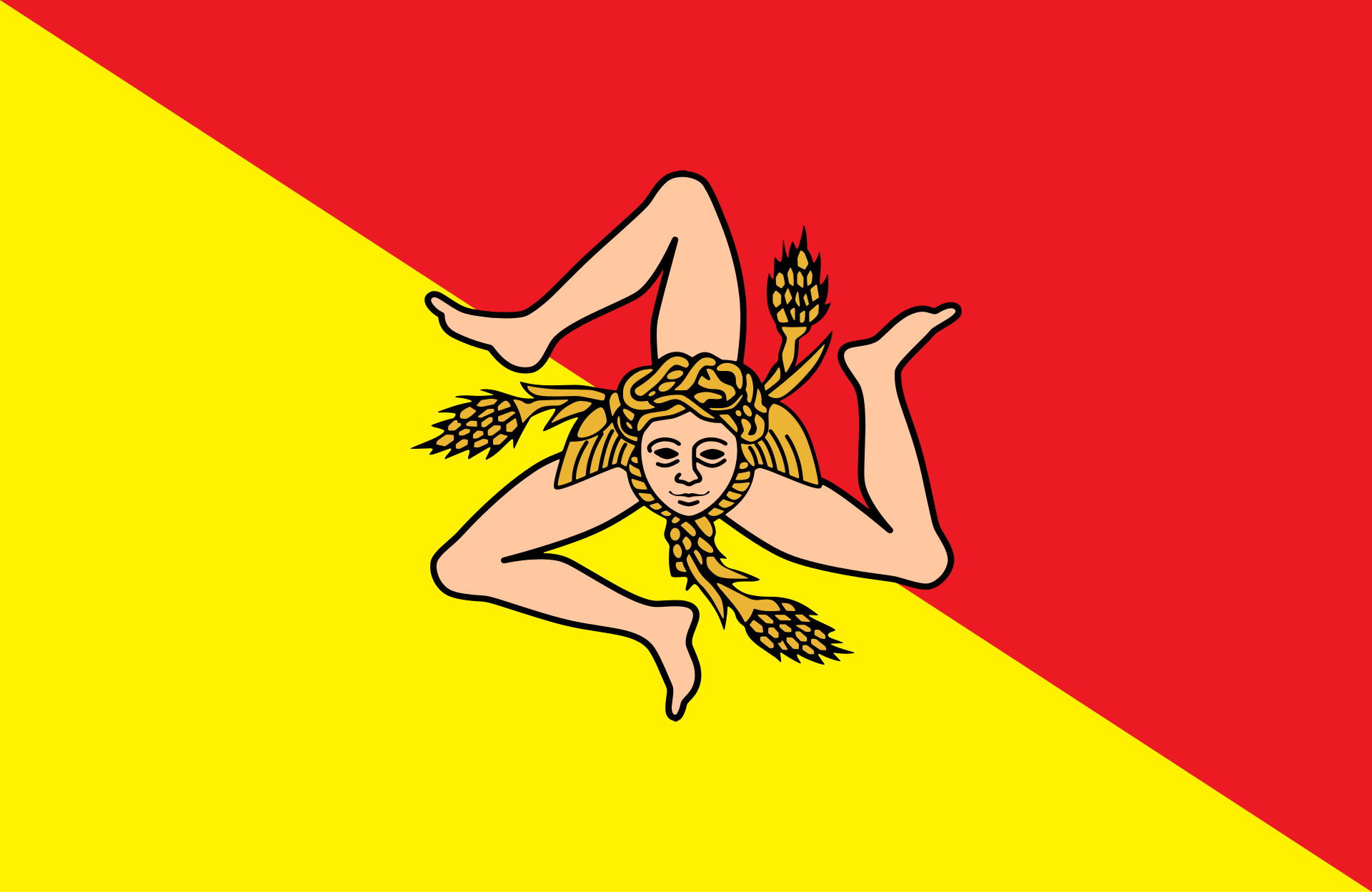 Sicilia
Sicilia